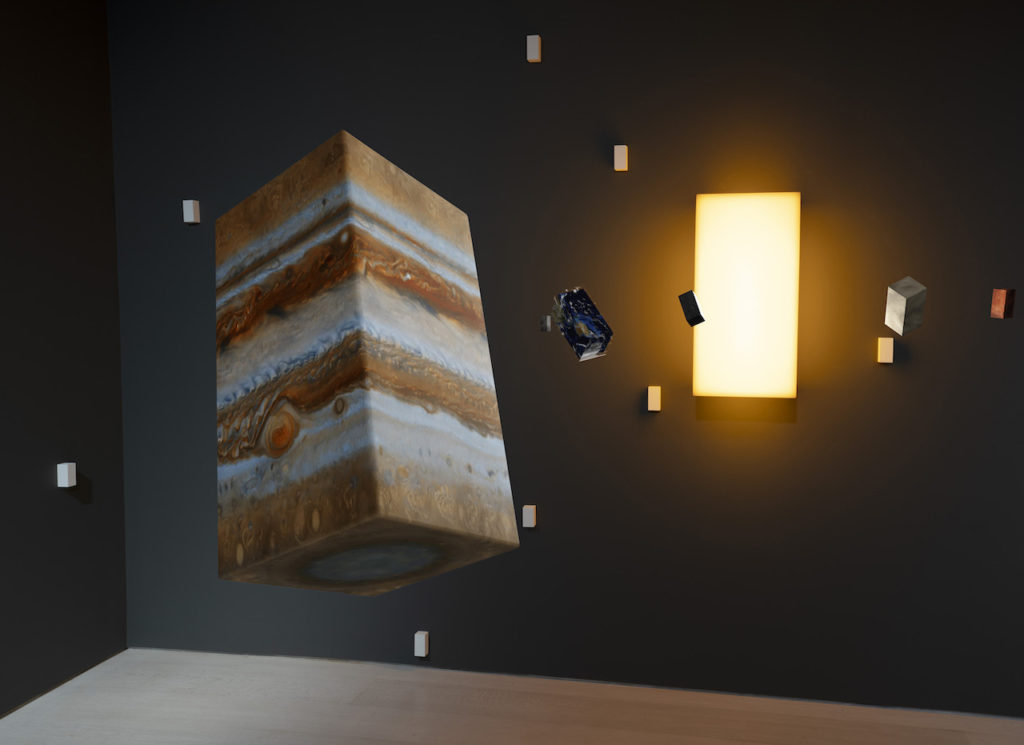Delaney Welsh ‘24
Non-fungible tokens, or NFTs, are a recent development in digital art that have become a polarizing topic in Philadelphia, according to the Philadelphia Inquirer. With the risks of counterfeit NFTs and theft at hand, some wonder whether the benefits reaped by new artists outweigh the dangers.

Photo Courtesy of Inquirer.com
NFTs use blockchain to authenticate original digital art pieces. Matthew Davis, Upper School Computer Science Teacher, explains, “The whole point of the NFT is that it is on the blockchain, so you can verify that it is yours.” These works can be downloaded and shared among many, but only one original exists, thus introducing the opportunity for artists to sell digital rather than physical art. NFTs have given smaller artists a chance to make a name for themselves via digital sales of their work. Additionally, collectors of these pieces have benefited financially.
Despite these advantages, some are critical of the new technology. Lauren Williams ‘24, who takes 2D design 1 and 2 where they have discussed digital art, questions our need for this digital innovation by claiming, “That’s what’s wrong with this generation. We are all in the electronics, and the phone, and the computer. Let’s be together in real life.” Additionally, Laila Benson ‘24, who has familiarized herself with NFTs because of her uncle’s involvement in the creation and sale of digital art, wonders if NFTs are giving people “false hope.” She explains, “I feel like a lot of people are putting in time hoping that they can get a lot in return out of it, when in reality it’s probably not going to happen for them.”
Statistically, art NFTs have proven to be very successful. Davis explains, “Art NFTs are the ones that have the highest individual value for the given NFT.” Davis adds, “while art NFTs aren’t sold as frequently as the collectibles, art NFTs have the highest sale values for the NFT itself.”
Episcopal Academy students who participate in Girls In Stem Club were given the opportunity to experience first-hand the work involved with art NFTs. Davis recaps the recent NFT competition, “They were given a data set, just when NFTs were bought and sold, and it was broken down by the different categories, and then they produced an analysis for the artist.” Kat Barber ‘23, a participant in the Girls in Stem NFT competition, explains, “Before competition day, we were tasked with minting an NFT and analyzing a data set containing values about NFT sales. We were all new to NFTs, and learned a lot through the process of minting one.Specifically, we learned that NFTs get minted to a blockchain that allows them to be bought and sold. We created a CoinBase Wallet account in order to be able to mint it.”
Ellen Erikson, Photography Teacher, believes there are redeeming qualities in the technology. Erikson explains the traditional workings of the art world saying, “Normally in the physical art world when an artist sells a work, it then belongs to another person, and if they sell it that person reaps all benefits.”
Furthermore, Erikson highlights the positive impact of NFTs on artists, noting, “An artist could sell a piece of art for five hundred dollars, or a thousand dollars, or two thousand dollars and then down the road that person who bought it could go on to auction it off or sell it for thousands and thousand of dollars, and the original artist doesn’t get another penny from that increase in value. And so what I like about NFTs is the idea that the original artist can always have a portion of ownership over their artwork, so as it is resold they can continue to make some money off of their artwork.”
The future of NFTs remains uncertain, especially in our community. Benson believes, “If you definitely do your research and you know what you are doing, then it is a great opportunity for smaller artists to be able to make some money.” However, she has her reservations, claiming that “there is still a chance of fraud and theft, so that would be a big downside.”
Erikson is unsure of the effects that NFTs may have on our community in the distant future, but she is secure in the belief that they will not make an impact any time soon. She states, “I don’t think that too many artists in the EA community are actively selling their artwork at this point in time.” Davis does not believe that NFTs will “revolutionize the entire world,” but he is hopeful regarding the future of NFTs, and encourages students to get involved. He states, “It’s something that I hope our students get into because I don’t think it’s going away any time soon.”